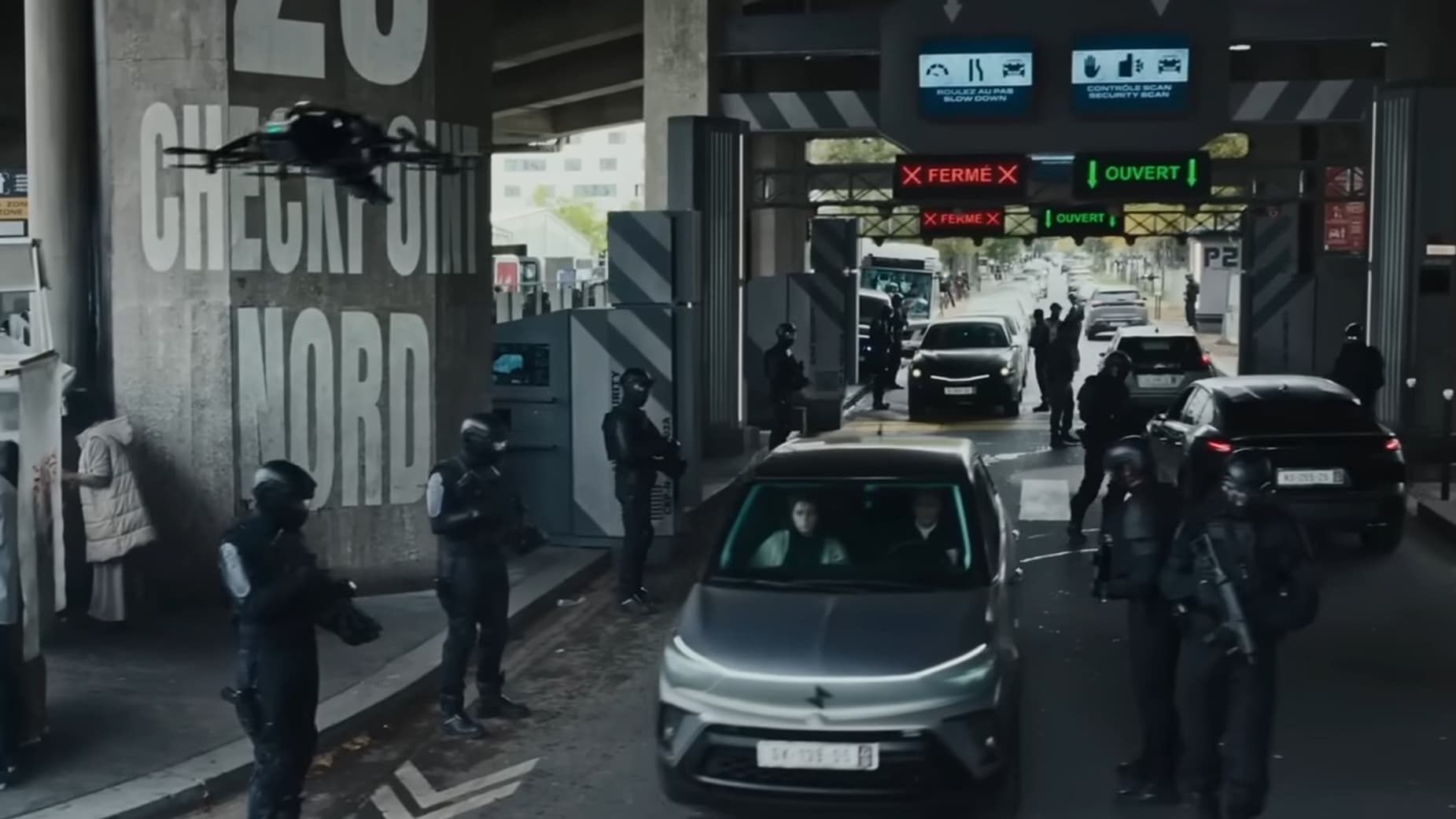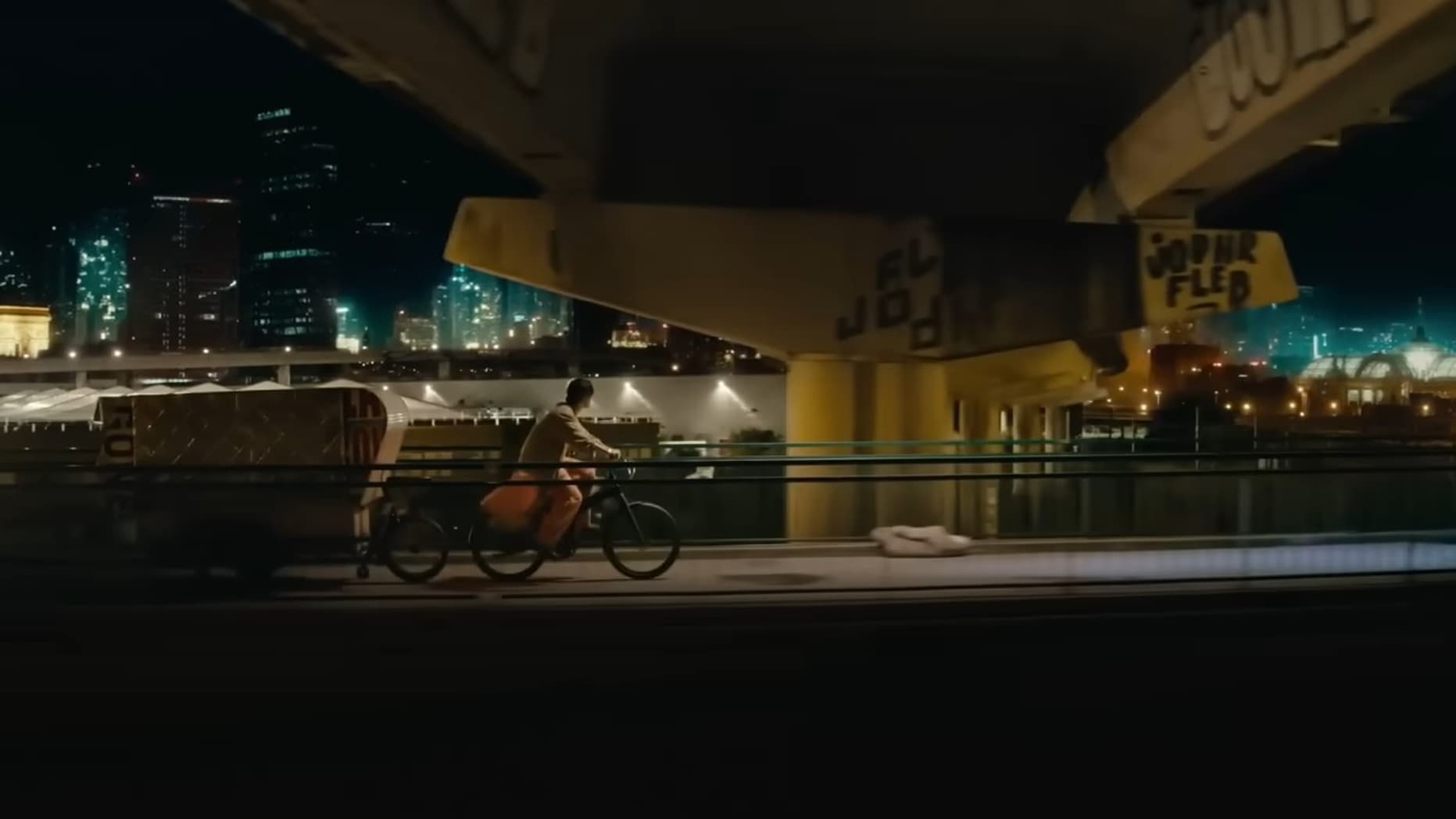Two worlds face each other, separated by the ring road. On one side, a stack of cold, modern skyscrapers, blue and glassy. On the other, a saturation of sodium yellow buildings, in some places dilapidated. A contrasting image that alone sums up the visual prowess of dog 51the new feature film by Cédric Jimenez adapted from the novel by Laurent Gaudé published in 2022.
Presented out of competition at the Venice Film Festival in September 2025 and released in theaters on October 15, this anticipatory thriller by Gilles Lellouche, Adèle Exarchopoulos, Louis Garrel and Romain Duris imagines a French capital divided into three social zones and monitored by an omniscient artificial intelligence called ALMA.
With a budget of 42 million euros, expectations are (necessarily) immense. The strength of this anticipatory feature film lies in its realistic accents. A success largely linked to the work carried out by the decoration and visual effects teams. “Cédric Jimenez’s ambition was not to make a futuristic film, but to talk about an augmented present,” summarizes Jean-Philippe Moreaux, production designer of dog 51 who also worked in love ugh EITHER BAC North. “As Paris is a museum city, very identifiable by its Haussmannian architecture, the danger would have been falling into a science fiction that disconnects people from reality.”
“It had to be very visually legible, that there was the idea of a city that is being built versus another that is disappearing; this is also how we represent power socially, when people disappear, they are dehumanized and then forgotten, they no longer exist,” explains Jean-Philippe Moreaux.
“We already live in an era of anticipation”
Unlike a period film, dog 51 he could not base his visual narrative on historical realities. Nor was it about filming on green screens, a method that Cédric Jiménez rejects in all his films, privileging reality. Thus, the shots were carried out between Paris and La Défense for the wealthy sectors, and in Provence-Alpes-Côte d’Azur for the declassified sector.
“Very quickly, the observation was to say that we were already living in an era of anticipation and to take what currently exists to try to maintain the scenario,” says Jean-Philippe Moreaux. Thus, for zone 3, which brings together the poorest, the team was inspired, among other things, by Makoko, a floating slum located in the lagoon of Lagos, in Nigeria.
Marseille was then the ideal support for these sequences. “It is a city in total deconstruction-reconstruction with buildings partially labeled, or even destroyed, and, right next door, very modern buildings in the process of construction,” says the production designer. The soft light of the South also accentuates the idea of a near future, subject to climate change.”
It is mainly in this setting that the dismantled policeman Zem (Gilles Lellouche) wanders through these improvised and glued-together buildings. Visually, a feeling of overcrowding emerges, reinforced in post-production by special effects. “The decision was to think about buildings built on existing buildings, with different materials and with more ecological ambitions, which is actually already being done today,” explains Cédric Fayolle, visual effects supervisor at dog 51.
Ubiquitous drones
The film required eight months of post-production, with more than 500 shots edited with special effects, equivalent to 47 minutes of a 1 hour and 45 minute film. Much of these special effects are related to the representation of ALMA’s artificial intelligence, particularly when reconstructing crime scenes for police investigations. “These interfaces could not be too ‘effective’, underlines the VFX supervisor. So we started from a system like a brain where each neuron would be data with a more digital than photorealistic representation. Because even if the AI is capable of generating images now, it did not work in our tests.”
Among the great technical challenges, drones, omnipresent in the cinematographic universe. The latter, which circulate in each area, were created digitally. Because “the physical models that we had artificially assembled were unbalanced on set.” Necessary maneuverability, especially for one of the most striking scenes: a chase between Salia (Adèle Exarchopoulos) and a drone.

What emerges is a disturbing and surprisingly realistic film. So realistic that it even bothered Parisian motorists during filming. “For the checkpoints, which separate the different zones of the story, we needed a visual typology linked to surveillance, identification and security of the places,” explains the production designer. While we were installing one, at Porte Pouchet, people stopped naturally, as if it were a real toll. At that moment we knew we were on the right path!”
Source: BFM TV


